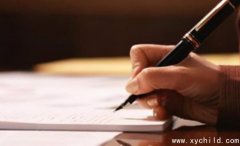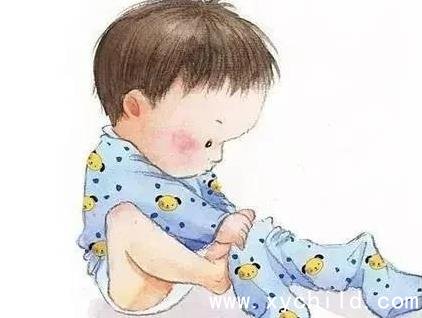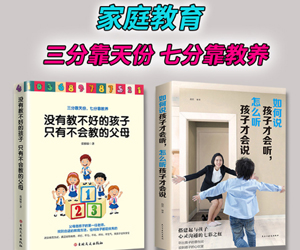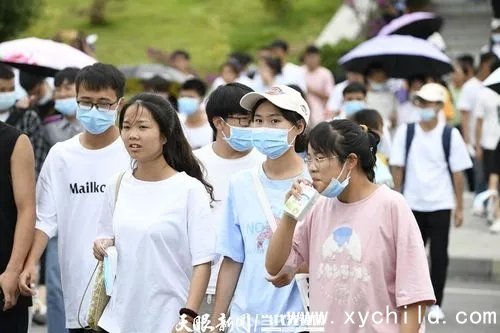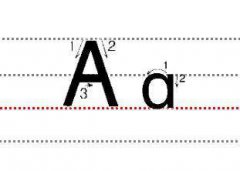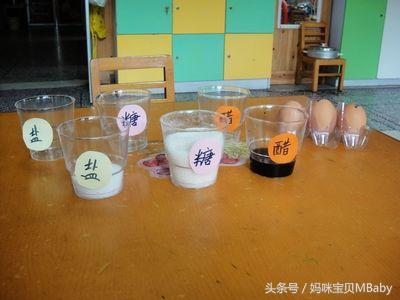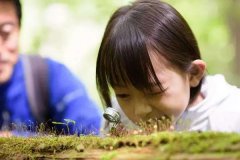端午节的由来与传说
端午节是一个古老的传统节日,始于中国春秋战国时期,至今已有2000多年的历史。端午节的由来和传说有很多,这里只列举以下四种:
纪念屈原
据《史记》《屈原贾生传》记载,屈原是春秋时期楚怀王的大臣。他主张赋能人才,富国强军,强逼联军抗秦,但遭到贵族子兰等人的强烈反对。流放期间,他写下了《离骚》、《天问》、《九歌》等不朽诗篇,忧国忧民。公元前278年,秦军攻陷楚都。屈原眼见祖国被侵略,心痛不已,但又不忍心放弃祖国。谱写一场壮丽的爱国运动。
据说屈原死后,楚国人民悲痛欲绝,纷纷涌向汨罗江祭拜屈原。渔民们划着小船,在河里上下打捞他的真身。一个渔夫把给屈原准备的饭团、鸡蛋等食物拿出来,“咚咚咚”地扔进河里,说鱼龙虾螃蟹吃饱了就不会咬屈医生的了。身体。众人见状,纷纷效仿。一位老大夫拿了一坛雄黄酒倒在河里,说是为了击晕龙水兽,以免伤到曲大夫。后来,为了怕饭团被龙吃掉,人们想出了用印楝叶包饭,再用彩丝包起来,发育成褐色种子的想法。
从此,每年农历五月初五,为了纪念爱国诗人屈原,便确立了赛龙舟、吃粽子、喝雄黄酒的习俗。
纪念吴子胥
端午节的第二个传说在江浙一带广为流传。纪念春秋时期(公元前770年-公元前476年)的吴子胥。吴子胥为楚国名将,其父兄皆被楚王所杀。后来,子胥弃暗投明,奔赴吴国,五战助吴攻楚,入楚都。当时楚平王已死,子胥挖坟鞭尸三百,为杀父兄报仇。武合禄王死后,其女婿柴继位。吴军士气高涨,百战百胜,越国战败。子胥建议彻底消灭越国,夫君不听,杀吴国,被越国收买,诽谤诬陷子胥,夫君信以为真,给子胥一剑,子胥死了。子胥忠心良善,视死为报。临死前,他对邻居说:“我死后,挖出我的眼睛,挂在吴泾东门上,让越军进城灭吴。”闻言大怒,于5月5日下令将子胥的尸体用皮包好,扔进河里。因此相传端午节也是纪念吴子胥的日子。
纪念孝女曹娥
端午节的第三个传说是为了纪念东汉(公元23-220年)孝女曹娥救了父亲不被投河。曹娥是东汉上虞人。她的父亲在河里淹死了,尸体好几天不见了。那时,她孝顺的女儿曹娥才十四岁,日夜在河边哭泣。 17天后,5月5日,他也投身江中,5天后将父亲的遗体取出。此事传为神话,传至郡守,令独尚为其立碑,并请弟子邯郸淳致辞赞颂。
孝女曹娥墓在今浙江绍兴。后来,据说曹娥的碑是金王仪所写。为了纪念曹娥的孝节,后人在曹娥投河的地方修建了曹娥庙。她所居住的村镇改名为曹娥镇,曹娥为父亲而死的地方被命名为曹娥河。
来自古越民族图腾节
近代大量出土文物和考古研究证实:在长江中下游广大地区,有一块以新石器时代几何印花陶为特征的文物。年龄。幸存氏族,据专家介绍,是一个崇拜龙图腾的氏族——历史上称为百越氏族。出土陶器上的饰物和历史传说表明,他们有剪头发和纹身的习俗,生活在水乡,是龙的传人。它的生产工具多为石器,也有锹、凿子等小型青铜工具。在作为日常生活用品的壶罐中,用于烹调食物的印刷陶鼎是他们独有的,是他们民族的标志之一。直到秦汉时期,还有百越人,端午节是他们设立的祭祀祖先的节日。在几千年的历史发展中,白越人大部分已经融入汉族,其余的则演变为南方的许多少数民族。因此,端午节成为了整个中华民族的节日。 ▲端午节的由来
农历五月初五的端午节是夏季最重要的节日。一般传统观点认为端午节起源于纪念屈原。然而,世界上盛行的许多龙舟风俗,比屈原的传说还要悠久。据此,有学者推测端午节可能另有渊源。俗话说端午节起源于忌邪的日子。
端午节是农历五月,是盛夏流行的季节,俗称“邪月”。因此,《夏小正》说:“(五月)贮兰,舒密”(贮:积,聚。舒:收藏。密:贮密)。 《大戴礼》曰:“存兰花,亦为沐浴。”洗澡的目的是为了净化和去除毒气,是对五月恶月的积极预防措施。这期间的一切行动,也是以休养为原则。 《礼记·月令》:“仲夏,阴阳相争,生死分,君子斋戒;同时五月忌多。据少英(公元17年8)@ >《风俗与史记》),汉代有“五月到任,或不动”、“五月盖房,让人秃顶”的习俗,而5月5日是个特别糟糕的日子。除了忌“露床推位”外,甚至还有一句“不提五月子”的谚语。《史记?孟尝君传》记载孟尝君生于5月5日,其父天鹰打算抛弃他,因为天鹰相信:“五月的孩子,与家人一起长大,不会对父母好。”这个邪恶的日子里的这个禁忌深深根植于人们的心中。人们。在节日的习俗中,找出毒药和防疫的成分。
端午节起源的第二种说法是闻一多先生提出的。闻一多在《端午考》一文中指出,端午节最重要的两项活动——赛马和吃粽子,都与龙有关。他首先引用了吴军的一段话(公元 467-520) 的《续齐邪记》):
五一屈原死在汨罗,楚国人悲痛万分。每天在这一天,将大米储存在竹筒中,并倒入水。汉代武术建设时,长沙瓯惠白天突然见到一个人,自称三鹿大夫,说:“你应该看看祭祀,很好。但经常留下的东西被盗了。 ”辉顺着他的话。天下人用五色丝印楝叶包粽子,都是汨罗的遗物。
同时端午节的由来,闻一多引用了几个文献例子来支持他的理论。这些记载也表明,端午节的起源与龙息息相关。闻一多据此推测端午节的由来,端午节可能原本是长江下游吴越民族的节日。相传自古以来,吴越是一个切断纹身的国家。至于切断纹身的目的,则是“像龙子一样”,以免受伤。 《汉书·地理·夏》应注:“(越人)常下水,故剪其发,纹身如龙,故无害。”闻一多的结论是,端午节应该是一个以龙为图腾的民族举行图腾节的日子。也就是端午节。
这些说法固然解释了一些具体的现象,但如果将其中任何一种视为端午节的单一起源,那就太可惜了。与其说是邪阳和龙图腾,倒不如说是端午节的可能来源。在历史发展的过程中,它们相互融合,直到屈原传说的加入为它们增添了新的动力,端午节从此壮大,成为重要的节日。
▲端午节的传说
据《史记》《屈原贾生传》记载,屈原是楚怀王时的大臣。出外会见客人,与诸侯打交道,国王会照顾他们。”因受楚怀王重用,惹得上官大夫和灵隐紫兰嫉妒,在楚怀王和继位清襄王面前污蔑屈原。结果,楚王逐渐疏远了屈原,不接受他的劝告,甚至流放了屈原。屈原悲愤交加,坠入江湖。写完名著《怀沙》后,怀石投身汨罗江。
屈原死后数十年,因谗官误国,楚国终于被秦灭。但屈原这个忠贞不渝的悲剧英雄,却依然活在楚国人民的心中。下面的故事可以说明楚人是如何爱屈原的。

据说屈原投身江河后,楚国人民悲痛欲绝,纷纷涌向汨罗河向屈原进贡。渔民们架起船,在河里上下打捞他的尸体。一名渔民还拿出提前准备好的粽子、鸡蛋等食物,扔进河里,说鱼虾要是吃了,就不会咬曲医生的身体了。老大夫拿了一坛雄黄酒倒在河里,说要药晕蛟龙,不伤曲大夫。
没过多久,一条昏迷的巨龙浮在水面上,龙须上披着曲医生的外衣。人们把龙拉上岸,掐住它的脖子,把龙筋缠在孩子们的手和脖子上,用雄黄酒涂抹七窍,使毒蛇和害虫不敢伤害孩子们。
据说屈原投河的那天是5月5日。此后,每年5月5日,人们都会划龙舟、吃粽子、喝雄黄酒来纪念屈原。
在某些地区,端石节的门上插菖蒲或艾蒿,当然是因为蒲爱有解毒的作用。不过,关于这种艾风俗的起源,民间有一种说法。
唐僖宗年间,黄巢率领叛乱。他所到之处,数百万人丧生,血流成河。老百姓一听说黄巢来了,赶紧逃走。
今年5月,黄巢大军攻打河南,逼近邓州城。黄超骑马在城外勘察地形。他看到一波又一波的老弱妇孺从城里涌出。他看到一个女人背着一个包袱,一只手抱着一个小男孩,另一只手抱着一个大男孩。黄超觉得很奇怪,下马问道:“嫂子,你这么着急要去哪里?”女子道:“听说黄巢是个杀人不眨眼的大反派,过几天就要攻打登州。城里的人都是招来守城的,我们老少都可以也早点为我们的生活奔跑。”
黄超指着孩子问她:“为什么你手里拿着小的,怀里却拿着大的?”女人说:“你怀里的那个是舅舅家唯一的客厅,是我自己的儿子,万一遇到紧急情况,我宁愿失去儿子,也不愿给舅舅家留苗。”
黄超闻言,大为感动,便对妇人道:“嫂子,快回去把菖蒲和艾草贴在门口,免得黄超军伤你。”
女人闻言心生怀疑,但还是回城传开了。次日是五月的端阳,黄巢大军攻城,只见门上挂着菖蒲和艾草。为了信守对女人的承诺,黄超只好带兵离开,整个城市都幸免于难。
为了纪念这一事件,此后每逢端午节,人们都会在门上摆上菖蒲和艾草。这个风俗一直流传至今。
▲端午节风俗
在屈原传说广为流传之前,端午节的风俗仍沿袭忌日忌讳,以保健防疫为主要原则。崔玉(卒于公元170年)《四民月令》中记载:“本月五日(五月),可做胡芦巴;合制离黄连丸、霍乱丸;采集胡芦巴耳朵和蟾蜍,制成一个合药,东行蝼蛄。”除了蟋蟀用来治疗难产外,其余都是治疗夏季常见病的药丸,如腹泻、中暑等。
应绍《风俗》记载:“五月五日,五月初五,五月五日,以五彩丝系臂,名长生线,命脉,逆命冰藏,五色线,红线。苏,避兵避鬼,不让人生病,不瘟疫。”单从“长寿”和“延年益寿”的名字就可以知道当时有多少人害怕坏太阳对生命的威胁。不仅要真正的炼丹治病,还要靠五彩丝在心理防御上抵御超自然、看不见的鬼魂和军灾。
尽管有这些顾忌,端午节的活力并没有减弱,积极祈福的风俗依然随处可见。周初(240-约299)的《风土记》)记载了晋代端午节新兴的习俗:“采艾挂屋,踩百草,赛跑”等等。当然,挂艾草是为了中毒和踩到一百种药材。这是一个后来被称为“战斗草药”的游戏。而被视为端午节特色的赛马风俗也在此时出现。据宗义(约498-56五)的《荆楚岁记》)“注:“按五月初五的赛跑,习惯上屈原投身于汨罗日伤其死地,命舟救之。”《史记》并没有记载屈原投河的日期。受传说的影响。事实上,赛跑和祈祷..表面上是为了拯救屈原而举办的比赛,基本精神还是和大难不死驱邪的初衷一样。
南北朝时,端午节又称“浴兰节”,荆楚有采艾的习俗。摘艾艾,要在鸡叫之前出发,挑出最像人形的艾蒿带回去挂在门上,或者用来针灸。据说这种艾草在针灸时没有任何疗效。老百姓把艾草扎成虎形,或者剪成小老虎的样子,再把艾草叶贴在上面,端午节佩戴。除了采艾,还采摘菖蒲酿酒。
在唐代,端午节已成为重要的节日,宫廷里有各种庆祝活动。唐朝皇帝经常在端午节奖励大臣。王璞(922-982)《唐徽要》卷35记载,贞观十八年,唐太宗赠长孙无忌、杨士道一把御笔题写的“白飞扇”。他说:“五天,用衣裳、戏相贺,是古风俗,今送你们两把飞白的扇子,让你们动风增德。” 《中国古今注》记载,端午节时,文官被赐黑玳瑁带,武官被赐黑银腰带。唐朝还记载,天宝年间,端午节时祭祀祖陵,送衣扇。
王仁玉(880-956)《开元天宝遗志》)唐玄宗时记载:“宫中每逢端午节,制粉丸、黍黍。金盘中。做弓,修长可爱,射箭,射盘上的粉球,打到的人就吃。 。”不过,这只是奢侈品人士可以玩的游戏。端午节期间,只能使用实惠的风扇。李瑙(生于880年以后)在《秦仲随记》中记载:“端午前二日,东城称番城,车马多。” 904年左右)的《云仙杂记》卷一又引《金门随街记》也说:“洛阳人……端午节庙上金银亭,遗扇免瘟疫。” (早期的扇子多是用蒲叶做成的,因为菖蒲有解毒的作用,所以所谓的防疫扇就是由此衍生而来的)。
唐代端午新风俗,所谓“五点图”。段成石(约803-863)《酉阳杂祖》卷1记载:“北朝女子五日入五点图五点花,将帐篷。”所谓“五点”“图”就是在纸上画蛇、蝎、蟾蜍、蜥蜴、蜈蚣,又称“五毒符”。据说只有当这五种毒生物是同时存在的,它们就不敢互相争斗,可以和平共处。所以,挂上五点钟的地图,可以防止这些毒虫闹事。
宋代的端午器物比历代更精致。孟元老《东京梦花录》(114卷第8卷7)记载:端午物、白梭、爱花、银鼓、花扇、甜糖、粽子、白球。紫苏、菖蒲,木瓜,都切碎,掺入香药,用梅红盒包好。从5月1日起端午节前一天,每天都有卖桃子、柳树、葵花、香蒲叶、佛艾。下一个一日,家家店铺摆在门前,供奉五色水球、茶、酒。把艾人钉在门上,文人互交宴席。
陈士良(约1225-1264)的《隋史广记》),引《隋史杂记》,提到一种“端午为红白相成如包,色线贯穿其中,抽如花。或带或钉在门上,口红舌白,亦称抽钱。”又一“蚌粉铃”:“端五日以蚌粉于丝中,缀以棉,似几珠,令小儿服之吸汗。”这些袋子里的东西几经变化,从吸汗的蚌粉、驱邪的符咒、铜币、驱虫的雄黄粉,到装满香水的袋子。香包的制作也越来越精致,成为端午节特有的民间艺术。
宋的独创性并不止于此。同样是毒菖蒲和艾草,它们也会添加一些花样,让它的外观艺术化。吴子木《梦良录》(1274年序)卷三记载南宋杭州端午节:“天师以艾草百草捆绑,挂于门额,或挂在白泽的老虎头上。” ,以艾为首,大蒜为拳,挂在门上辟邪。 “天师”和“虎”是端午节最常见的两个形象,因为它们的出现足以威慑邪魔。同时,我们也可以看到道教对端午习俗的影响。

从明代开始,原本用来驱毒的五毒符逐渐成为装饰元素,成为女性发簪的点缀。沈邦《万术杂记》(1593)第17卷记载:“女子画蜈蚣、蛇、蝎、虎、蟾五毒符,附钗头。”这种发钗头饰在清代江南地区被称为“剑人”或“当明”。
明朝的北京,端午节是“女儿节”。 《万书杂记》第十七卷记载:“万宿,从农历五月初一到初五,打扮成一个小女孩,看起来很漂亮。已婚的女孩也回到了自己的家中,因为它被称为“女儿节”这个风俗似乎只有北京才有。
*在靠近河流的地方,端午节会举行龙舟比赛。张岱《陶庵梦记》(1646年)卷5《金山渡》:瓜州有12或20艘龙舟,描绘龙首尾,以取其怒;绣花雨伞,前后横额,择其光彩;打鼓,选择他们的结;船尾后面的武器,抓住他们的屋檐;龙头上的人直立,压迫他们,选择他们的危险;龙的尾巴吊着一个孩子,以风险为准。农历五月初一到十五,天出画地,初五出金山,镇江也出。狂暴跃起,蛟龙争斗,纵然落入漩涡,百胜必败,被平底锅送出。金山上的人成群结队,隔河望去,蚂蚁附在蜂群上,刚要动身。傍晚,江河全开,两岸沸腾。
杨思昌(1588-1641)的《武陵赛渡》)详细记载了明代元祥地区的赛马风俗。当地的风俗是为灾难赛跑。因此,在划龙舟之前要举行各种祭祀活动。需要聘请巫师祈求胜利。划完龙舟后,居民们将龙舟上的水舀起,加入药材沐浴。目的也是为了避邪。
西湖有两种龙舟。一层分为上层和下层。上层有装扮成各种历史和神仙人物的孩子,下层有宣传员,敲锣打鼓,坐在水手划艇的两侧。这种龙舟更具表演性。比赛用的龙舟绕着大龙舟转,当大龙舟上落下物件时,小龙舟上的水手就下水争抢。其中,钱和鸭子是最难抓的,因为硬币沉入水中,鸭子会跑来跑去躲避它们。虽然历朝历代都有端午捕虾、蟾蜍入药的习俗,但似乎直到明代,宫廷的太医才加入这一方的阵容。刘通、于一正《京城风光》(1635)卷二:“(五)取蟾蜍。”服用蟾蜍素的方法是在蟾蜍的两眉之间针刺,使蟾蜍分泌出一种白色的乳状毒液。然后用竹片把它刮掉,保存起来。据说蟾蜍能治疖肿。
另一种治虫的民间疗法是喝菖蒲和雄黄酒。除了喝酒,还要在帐篷上放雄黄酒。古鲁《清溪录》(1830年)卷五:“研刨花根雄黄末,配酒饮之,谓之‘雄黄酒’。余酒亦用以染孩童额头心。 “有的孩子不敢喝酒,父母会用雄黄酒在额头上画一个“王”,防止毒物侵入。
▲端午节
最早的端午食品应该属于西汉时期的“猫头鹰汤”。 《史记?武帝志》注如春燕:“汉使东郡送猫头鹰,5月5日,猫头鹰汤赠百官,因恶鸟而食。 可能是因为猫头鹰不容易抓,所以猫头鹰被吃掉了。喝汤的风俗并没有持续下去。档案是端午节的主角——粽子,出现在东汉后期。伊伊到了晋代,粽子就成为端午节的节日食品。 《丰图记》:“五月初五,夏至同一天,……前二节一日,我用野叶包糯米,拌小米,煮纯浓的灰汁使它煮熟。”同时,还有另外一种端午节食,叫“龟”,在晋代只是昙花一现,后来就销声匿迹了。唯有《赋图记》中名为“交米”的粽子,因附有屈原的传说,成为千百年来最为盛行的端午节。
从《福土记》记载的做法来看,当时的粽子主要是用小米做的,除了小米外没有添加其他馅料。但是,在注重饮食的中国人的娴熟管理下,我今天看到的饺子,无论是形状还是内容,都发生了各种各样的变化。
首先,在形状上,各地的饺子有三角形、四边形、枕形、小宝塔形、圆棒形等。粽叶的材质因地而异。由于南方盛产竹子,就地用竹叶包粽子。大多数人都喜欢用新鲜的竹叶,因为用干竹叶包起来的粽子煮熟后不会有竹叶的香味。北方人习惯用芦苇叶扎粽子。芦苇叶细而窄,所以用两三片重叠的叶子。粽子的大小也差别很大,从重二、三公斤的巨型包粽到不到两英寸长的小巧玲珑。
在口味方面,饺子里有荤素搭配,咸甜可口。北方的粽子以甜味为主,南方的粽子少甜多咸。材料的内容是最能突出地方特色的部分。
北平的粽子分三种:一种是用糯米做成的白粽子,用白糖蒸熟吃。另一种是枣饺子,里面装满了枣子和果脯。三是豆沙饺,比较少见。 In North China, there is another kind of zongzi that uses yellow millet instead of glutinous rice, and red dates are used as the filling. After steaming, I saw the bright red dates embedded in the yellow sticky millet, some people call it "gold wrapped agate".
Zhejiang Huzhou Zongzi, the rice is fragrant and soft, and is divided into salty and sweet varieties. Salty with fresh pork, soaked in fine soy sauce. Each zongzi is filled with a piece of fat and lean meat. Sweet dumplings are filled with jujube puree or bean paste. Add a dollop of pork suet on top. After steaming, the lard is blended into the bean paste, which is very fragrant and palatable. The rice dumplings produced by "Wufangzhai" are especially famous. The fillings are selected by special personnel, including eight treasures, chicken, bean paste, fresh meat, etc., each with its own characteristics.
Sichuan's salt and pepper bean dumplings are also unique. Soak glutinous rice and red beans for half a day, add pepper noodles, Sichuan salt and a little diced bacon, and wrap them into four-cornered dumplings. Cook on high heat for three hours, then put it on a wire mesh and brown it with charcoal. It tastes crispy on the outside and tender on the inside, with a lot of flavor.
Zhongshan Ludou Zong in Guangdong is characterized by a round stick shape and a thick arm. The ingredients are also divided into sweet and salty. The sweet ones include lotus seed paste, bean paste, chestnut paste, and jujube paste; the salty ones include bacon, roast chicken, egg yolk, ganbei, mushrooms, mung bean, roasted meat, etc.
The zongzi in southern Fujian are divided into alkaline zongzi, meat zongzi and bean zongzi. Alkaline rice dumplings are made by steaming glutinous rice with lye. It is sticky, soft and slippery. It's especially delicious with honey or syrup after it's chilled. The meat dumplings are made of braised pork, mushrooms, egg yolks, dried shrimps, dried bamboo shoots, etc. The meat dumplings in Xiamen are the most famous. Bean dumplings are popular in Quanzhou. They are made of September beans mixed with a little salt and wrapped with glutinous rice. After steaming, the beans are fragrant, and some people eat them with sugar.
▲Dragon Boat Festival customs all over the country
〔Hebei Province〕
Beijing avoids digging well water during the Dragon Boat Festival. It is often pre-drained before the festival, which is said to be to avoid well poisoning. Market vendors also sell cherries and mulberries on the Dragon Boat Festival. It is said that if you eat cherries and mulberries on the Dragon Boat Festival, you will not accidentally eat flies throughout the year. The "Five Poison Cakes" are sold at various stoves and food shops, that is, cakes decorated with patterns of five types of poisonous insects. The in-laws of men and women who have been hired by Luan County will present gifts to each other on the Dragon Boat Festival. On the Dragon Boat Festival in Zhaoxian County, the local government will hold a party in the south of the city, and invite the literati and officials in the city to feast and write poetry, which is called "Treading the Willow".
〔Shandong Province〕
During the Dragon Boat Festival in Zouping County, everyone has to drink a drink when they get up early. It is said that it can ward off evil spirits. On the Rizhao Dragon Boat Festival, children are wrapped with seven-color threads, which are worn until the first rain after the festival, and then they are untied and thrown into the rain. On the Dragon Boat Festival in Linqing County, boys under the age of seven wear a talisman (a necklace made by Mai Di), girls wear pomegranate flowers, and wear yellow shoes made by their mothers. Five kinds of poisonous insects are painted with a brush on the uppers of the shoes. It means killing five kinds of poisonous insects by means of Qu Yuan's ink. Jimo washes his face with dew on the morning of the Dragon Boat Festival.

〔Shanxi Province〕
During the Dragon Boat Festival in Jiezhou, men and women wear mugwort leaves, which is called "removing diseases", and young children are tied around their necks. It is said that this is "binding a dragon for Qu Yuan". On the Dragon Boat Festival in Xizhou, villages offer sacrifices to the Dragon King and hang paper in the fields. The Dragon Boat Festival in Huairen County is also known as "Zhumen". During the Dragon Boat Festival in Dingxiang County, students need to give gifts to teachers. In Lu'an Prefecture, steamed balls are made of wheat noodles, called "white balls", which are given to each other together with zongzi.
〔Shaanxi Province〕
On the Dragon Boat Festival in Xing'an Prefecture, local officials led their subordinates to watch the race, which was called "stepping on the stone". On the Dragon Boat Festival in Xingping County, small horned millets are sewn with silk, and a small doll is sewn on the bottom, which is called "playing dolls". The Dragon Boat Festival in Tongguan County uses Puai and paper cows to stick to the door, which is called "suppressing disease".
[Gansu Province]
Jingningzhou Dragon Boat Festival picks roses and pickles them with honey. Zhenyuan County presented the newlyweds with incense fans, Luo Qi, towel handkerchiefs and Aihu on the Dragon Boat Festival. The children also invited their fathers and brothers to feast their teachers, which was called "Enjoyment Festival". On the Dragon Boat Festival in Zhangxian County, the shepherd boy worships the mountain god. The hill of accumulated salary is burned before the crowing, commonly known as "burning the mountain".
[Jiangsu Province]
Dragon Boat Festival in Jiading County, regardless of the rich or the poor, must buy totoaba (commonly known as carp) to cook. In Yizheng County, there is also a proverb of "be the pants and buy the yellow croaker". During the Nanjing Dragon Boat Festival, each family uses a box of clean water, adds a little realgar, and two goose-eye coins. The whole family uses this water to wash their eyes. It is called "Baohuoyan". In Wujin, there is a night dragon boat show. At night, small lights are hung on all sides of the dragon boat, and there are flute and drum singing.
〔Sichuan Province〕
The stone pillars have the custom of "going out of the Dragon Boat Festival". A large square table covered with a red carpet was lifted by four people with two bamboo poles. A Taoist priest riding a tiger is woven with bamboo strips on the blanket. Drums and gongs, street parade. In the old days, there was a custom of "beating plums" on the Dragon Boat Festival in western Sichuan. On that day, all the people of Chengdu bought plums and threw them up and down on the tower in the southeast corner of the city, gathering tens of thousands of viewers. In the 21st year of Guangxu (1895), this custom stopped because of a conflict with foreign missionaries by throwing Lee. During the Dragon Boat Races in Leshan, Xinjin and other places, grand commodity fairs were also held.
〔Xijiang Province〕
School children in Tonglu County Township School, the Dragon Boat Festival presents a ceremony to their teachers and calls them "silk clothes". Physicians collect medicines at noon, and it is said that on this day the medical star is near the sky.
[Jiangxi Province]
Jianchang House uses Baicao water to bathe at Noon Festival to prevent scabies. Xinchang County drinks it with realgar and cinnabar wine, which is called "eye opening".
〔Hubei Province〕
Huanggang County Dragon Boat Festival Bahe Town welcomes Nuo people, flower crown tattoos, and ringing gold to fight the epidemic. The Dragon Boat Festival is held in Yichang County, but it is especially prosperous on 十三、十四、May 15th and 3rd. On May 15th, it is also known as "Great Duanyang", eating rice dumplings and drinking Pu wine, such as the Dragon Boat Festival.
〔Hunan Province〕
During the Dragon Boat Festival in Youxian County, the wealthy pregnant women use flower coins for food and wine, while the poor prepare chicken wine and put the money in bamboo clips before the dragon head to pray for safe delivery. Yuezhou Prefecture raced to think of disasters and diseases. It is also used as a grass boat to flood water, which is called "sending plague".
[Fujian Province]
It is an old custom of the Dragon Boat Festival in Fuzhou, so the daughter-in-law presents her in-laws with shrouds, shoes and socks, dumplings, and fans. Jianyang County uses five days as the day for the king of medicine to dry the medicine bag, and everyone makes sauce on this day. On the Dragon Boat Festival in Shanghang County, a boat is used to bind reeds to make a dragon-shaped play on the waterfront, which is called racing. After the Dragon Boat Festival in Xianyou County, paper was presented to Hu Xiaotan to commemorate Qi Jiguang's drowning soldiers in the reign of Jiajing. Before the Dragon Boat Festival in Shaowu Prefecture, women use red yarn as a bag to hold the charm. It also uses five-color velvet for the square victory, and uses colored threads to tie it to the hairpin. The young girl hangs on her back and is called "Dou Niang".
[Guangdong Province]
At noon on the Dragon Boat Festival in Conghua County, after washing the eyes with boiled water, sprinkle it on the road, which is called "sending disaster". On the Dragon Boat Festival in Xinxing County, people from their neighboring temples advocated that the Yingdao statues would go on tour. The sorcerer also used magic water and stickers to expel evil spirits. On the Dragon Boat Festival in Shicheng County, children fly kites, which is called "Flying Misfortune".


